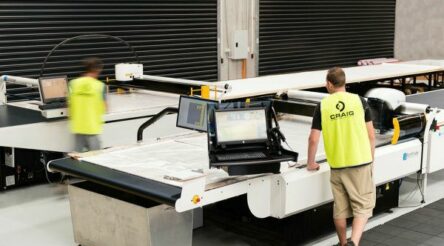Land Forces 2022 — A tough but rewarding job

In the final day of @AuManufacturing’s special editorial series, Land Forces 2022, we look at contract manufacturing firm GPC Electronics. Brent Balinski speaks to Managing Director Christopher Janssen.
Defence makes up about 10 to 15 per cent of turnover at GPC Electronics, the Western Sydney contract electronics manufacturer run by Christopher Janssen. He describes it as “a tough but rewarding sector” and one offering good growth potential.
“It is a long horizon, so it’s not something you do because you’re going to get results in one or two years,” he tells @AuManufacturing.
“You have to develop the capabilities, the culture, how to work with defence, the understanding and the relationship with people.”
Janssen founded the company in 1985 – after leaving a career in medicine to retrain via an MBA and then start a business – which grew up with a burgeoning local electronics industry. Today it employs between 160 and 180 at the Jamisontown factory, with other sites in China and New Zealand.
(An in-depth @AuManufacturing article on the company and its history can be read here.)
The move into defence began about seven or eight years ago, Janssen recalls, when they saw the rising desirability of Australian content in projects.
Today they support programs including the BAE Systems Australia-led Jindalee Operational Radar Network (JORN) upgrade, and Boeing Defence Australia’s LAND 2072 Phase 2B Currawong battlespace communication system.
Defence is an opportunity others have noticed within electronics and other parts of Australian industry, though comes with its challenges.
In this episode of @AuManufacturing Conversations with Brent Balinski, Janssen shares a few of those, as well as the ways GPC has dealt with the semiconductor shortage, his thoughts on how it’s been able to retain capable, long-term staff, and its approach to innovation as a contract manufacturer.
On the last point, it has something to do with viewing the company as providing a service, not a product, says Janssen. Making a product just happens to be the service.
“And so what we want is really robust systems, and I would be confident in saying we have some of the most robust systems in manufacturing in electronics in Australia,” he explains.
“I can say that because I know that when we talk to multinational corporations, who audit us from, from Germany, England, the US, Canada, Japan and other places, they all come and they are very impressed with what our systems and capabilities are.
“So innovation is actually how we set up the processes to be robust, to create a high level of flexibility without adding a cost, so for our batch processes we can run much smaller batches without a cost penalty.”
Episode guide
0:20 – Personal and company background.
6:04 – Their customers and their work in defence, which represents about 10 – 15 per cent of turnover.
8:25 – Defence projects, including with BAE on JORN and high-frequency systems, Boeing Defence Australia on the Currawong program.
10:10 – The challenges of working in the defence sector.
13:24 – What does innovation look like as a contract manufacturer?
15:38 – The different ways they’re dealing with the semiconductor shortage.
18:42 – Two-thirds of the company have been there more than 20 years. How do they keep staff interested in what they’re doing?
Further reading
A GLOBAL SEMICONDUCTOR SHORTAGE HIGHLIGHTS A TROUBLING TREND
CELEBRATING AUSTRALIAN MADE – GPC ELECTRONICS
@AuManufacturing’s special editorial series Land Forces 2022 is brought to you with the support of Thales Australia and BAE Systems Australia.

![]()
Topics Analysis and Commentary Defence
@aumanufacturing Sections
Analysis and Commentary Awards Defence Manufacturing News Podcast Technology Videos










